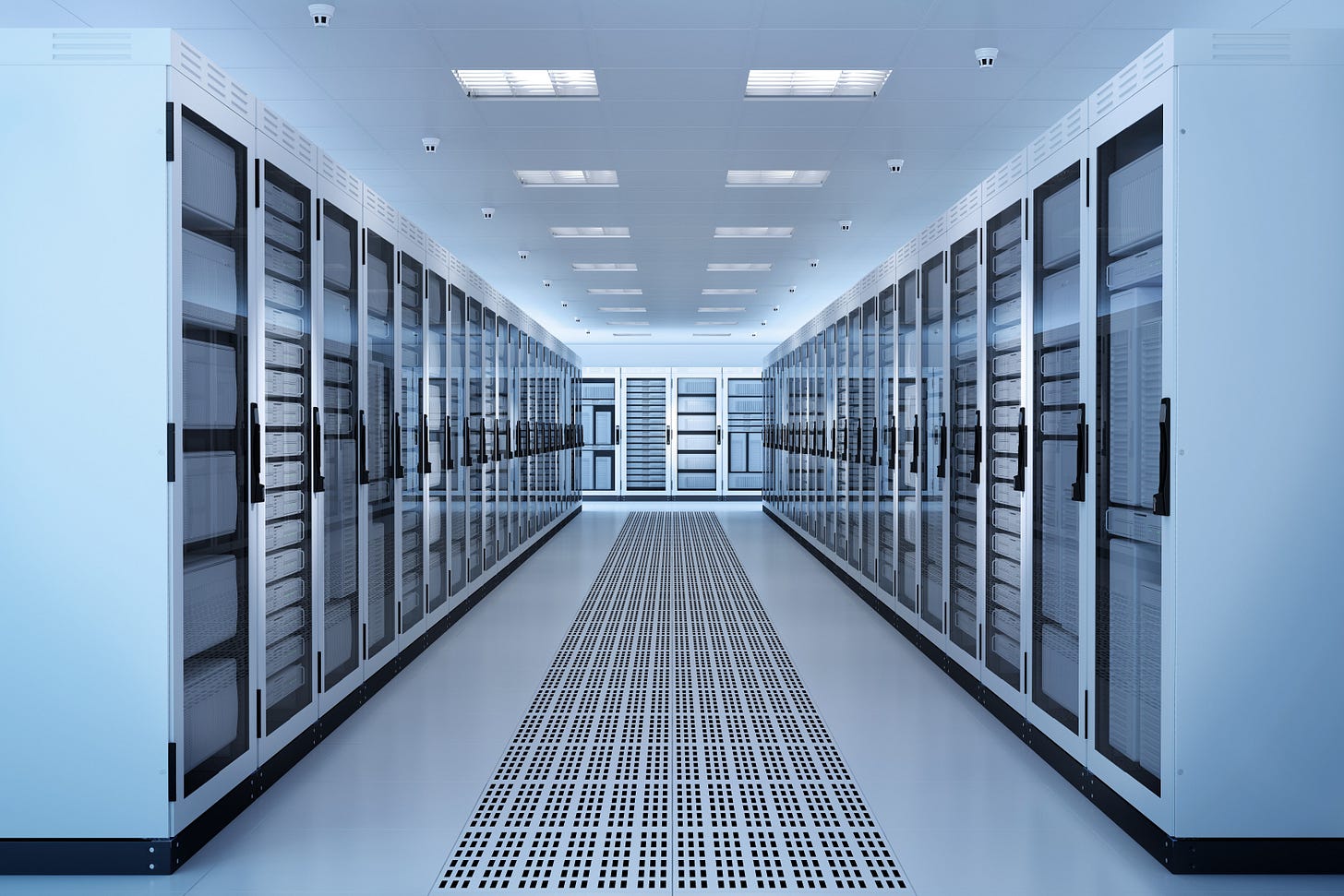Opinion | Data Centers, Ecology, and Trade Union Complicity
A guest op-ed by Michael Iverson
This op-ed was originally published by Michael Iverson, President of the Committee on Political Education for the IBEW 426 out of Sioux Falls, SD, and member of the Sioux Falls Regional Labor Federation.
The following polemic is in response to recent conversations regarding data centers and the clamoring drive to build them, ultimately ignoring the massive damage they will cause now and in the future.
Ever since the explosion in popularity of AI, data centers have been on the tip of every corporate executive’s tongue, pushing the incessant need for them and the so-called “good jobs” that they will bring to local economies. Bankrupt Representatives like Dusty Johnson have no problem pushing his agenda forward, saying that South Dakota can do data centers “right”, citing how much money these buildings will bring in property taxes as a boon for South Dakota. But there is a hidden cost that is being paid by the working class in building these behemoths that is intentionally being obscured by the ruling class in its drive towards absolute dominance of not only in implementing AI into every facet of society, but also in the massive increase in surveillance that comes with it.
First, let’s explore the immense impact on the environment and the working-class that these data centers represent. It cannot be understated the sheer amount of power needed to maintain data centers. Americans across the country are pushing back on data centers for many reasons, one of them being that a typical data center consumes enough power for 100,000 houses, some being over 20x that, according to NPR. Not only that, but residents near centers run by Meta cite constant noise, water usage, and skyrocketing electric bills as the consequences of living near them.
Having spoken to fellow electricians and linemen on the matter, some have brought up the fact that data centers often have redundant loops, so they are fed from multiple substations. In the case of an outage, the city might not have power, but the data centers will continue to run unimpeded. Others have cited policies in place that put priority of data centers over even that of hospitals in the event of a partial grid shutdown.
AI and Corporate Dominance
Make no mistake, corporations are not falling over themselves to implement AI into every facet of society with benevolent intentions. Not only are corporations always scraping data to collect on every person across the globe, but many are using that data for surveillance. From flagging visa holders for signs of political dissent online, to being on school devices, to every corner of a city. The use of AI to map a person’s every move gives vibes similar to the 2002 film Minority Report, a movie about individuals harboring psychic abilities able to see a crime before it’s committed in order to arrest the individual.
But on top of surveillance is the more open-faced explanation: companies want access to AI so they can cut down their workforce and raise profit margins. In particular, we’ve seen the video game developing industry hit especially hard with layoffs as companies scramble to implement AI into their tools. Some, like Activision, aren’t even attempting to hide it anymore, as the latest Call of Duty title saw flagrant use of AI for various in-game items. Being a company worth tens of billions of dollars, Activision has more than enough money to pay its developers.
While Hyman Lumer wrote The Promise of Automation and How to Realize It in the 1950s, his analysis of automation can also be applied to the current application of AI.
“Technological improvements, as we have seen, serve to reduce the worker’s share in his product, and thus to widen the gap between production and the market.
Automation, with its tremendous expansion of productivity, threatens to displace workers and to widen the gap between productive capacity and mass purchasing power to a vastly greater degree than ever before. It therefore greatly intensifies the menace of economic crisis. Indeed, the full development of automation, coupled with the successful harnessing of atomic energy, would create prospects of such a degree of unemployment as to be utterly devastating.”
Should AI be implemented in a way that relieves workers of menial labor and improves their livelihood, then the case could be made for its existence. As it stands, AI instead serves to enrich the ruling class at the expense of the working class.
Trade Union Complicity
Amongst all the negatives of data centers and their complete takeover of people’s lives and the electrical grid, trade unions are full steam ahead in their approval. To gain a better understanding of potentially why, we need to look back at the past decades.
During McCarthyism, the AFL-CIO unions launched a campaign of expulsion against militant elements within them. Slowly, unions lost their momentum and their power in favor of making deals with the bosses and labor peace. No-strike clauses were signed, and the rank-and-file were slowly shut out of running their unions in favor of business-friendly leadership that wouldn’t rock the boat. Today, the trade unions push the “top-down organizing” tactic that focuses on organizing contractors as signatories in the union instead of organizing the workers, followed by an election sponsored by the NLRB (that is, if the NLRB can even facilitate such an election, given that they are practically defunct with no quorum).
Every action either increases working-class power or shunts it. In the event of viewing contractors as more of a priority to organize than workers, this ultimately weakens the unions that are meant to be an embryo for working-class power. The implementation of no-strike clauses, leadership that favors labor peace rather than fighting for its rank-and-file, and the overall ideology of business unionism have chipped away at union militancy.
Fast forward to today, in the midst of an economic downturn, and the unions have put themselves in a position of promoting data center work because it is the only booming section of construction. Unions have left themselves in a position, because of their unwillingness to seriously organize the working class, that they are willing to sacrifice people’s health and promote unfettered surveillance if it means getting their members on a jobsite. If unions had maintained their militancy and organizing in the rank-and-file, they would not be in the current predicament they find themselves in.







Great article! Very on point